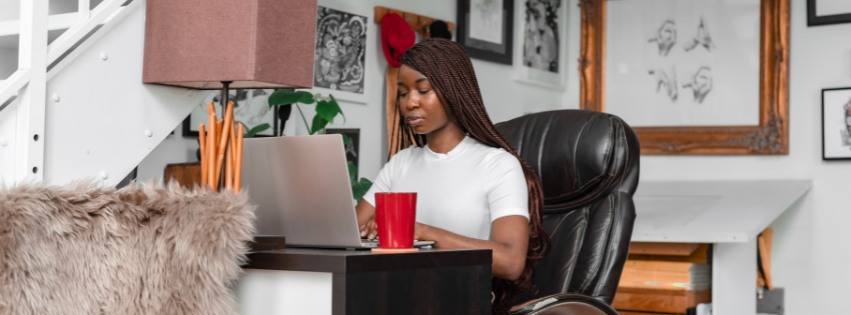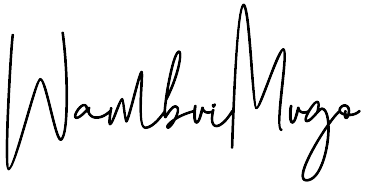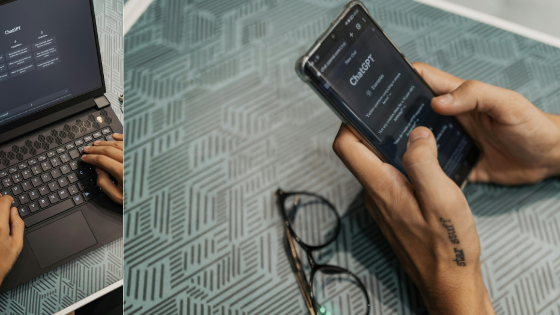8 Ways to Build a Strong Personal Brand as a Freelancer

You’ve got the skills. You’ve got the drive. But the clients? Crickets. If this sounds familiar, the problem might not be your work ethic—it’s your lack of a personal brand.
Here’s the deal: Freelancing is no longer just about talent; it’s about how you package and present yourself. A recent Upwork study found that 70% of Gen Z professionals are shifting to freelance work in search of independence and flexibility.
That’s a lot of competition.
So, how do you make sure you’re the one getting noticed? By building a personal brand that’s as compelling as your skills. A strong personal brand isn’t just a buzzword—it’s your ticket to attracting dream clients, commanding higher rates, and creating a freelance career that thrives in 2024.
The good news? You don’t need to be a marketing guru to create a personal brand that works. In this guide, I’ll walk you through 10 proven strategies to create a brand that gets you seen, remembered, and hired.
Ready to turn your freelance persona into a powerhouse? Let’s dive in!
Understanding the Basics of Personal Branding
What’s the first thing a client thinks when they come across your profile or portfolio? That’s your personal brand at work. Whether you’ve consciously built it or not, you already have one—and it’s making an impression. The real question is, are you in control of it?
What Is Personal Branding?
At its heart, personal branding is the art of shaping how the world sees you. It is the practice of marketing yourself as a unique and valuable service provider. It’s about defining who you are professionally and communicating that identity consistently across everything you do. This includes:
- Your visual identity: Your logo, colors, and overall aesthetic. Think of it as the “look” of your brand.
- Your messaging: The tone and language you use to communicate with clients, whether in emails, on social media, or through your website.
- Your online presence: Your online footprint—everything from your LinkedIn profile and website to your portfolio and even your tweets.
A personal brand is the full package that makes you unforgettable.
Why Does Personal Branding Matter?
In a world where 70% of freelancers say the gig economy is more competitive than ever, personal branding isn’t just a “nice to have”—it’s your competitive edge.
Here’s why personal branding is your secret weapon:
- It builds trust and credibility.
Before clients see your work, they see your brand. A cohesive, professional presence makes you look reliable and capable. - It sets you apart.
In a sea of talented freelancers, your brand is what makes someone pick you. - It attracts the right clients.
Your brand reflects your style, approach, and values. The clearer your message, the more likely you’ll attract clients who truly align with your goals.
Key Elements of a Strong Personal Brand
- Clarity
Know exactly what you’re offering and who you’re offering it to. A vague brand confuses potential clients—and confusion leads to missed opportunities. - Authenticity
Be yourself. The world is full of cookie-cutter brands, but people connect with what’s real. Clients can spot inauthenticity from a mile away. Let your personality shine through.
How to Stay Authentic:
Be yourself: Let your personality shine through in your communication. It’s what makes you, you.
Example: If you’re a writer who loves humor, let that tone carry through in your portfolio or social posts.
Be vulnerable: Share challenges, lessons learned, and small wins. These make you relatable and human.
Stick to your values: Align your brand with what matters most to you. Clients who share those values will be naturally drawn to you.
- Consistency
From your Instagram bio to your email signature, your brand should feel seamless and intentional. Inconsistency creates distrust.
Tips for Nailing Consistency:
Create a style guide: Define your brand’s voice, visual elements (like colors and fonts), and key messaging points. Use this guide whenever you create content.
Example: If your tone is conversational, keep it consistent across social media, emails, and proposals.
Use templates: Platforms like Canva make it easy to create reusable templates for social posts, presentations, and invoices, keeping everything visually aligned.
Schedule regular check-ins: Review your website, social media profiles, and portfolio periodically to ensure they’re still aligned with your branding.
Personal branding isn’t something you master overnight, and it doesn’t have to be perfect from the get-go. The key is starting small, staying true to who you are, and refining your approach as you grow.
Essential Skills for Building an Effective Personal Brand
Let’s get one thing straight: Building a personal brand isn’t just about pretty logos and polished Instagram feeds.
At its core, your brand is built on skills—both the ones you bring to your freelance work and the ones you use to showcase it.
Your brand is powered by a combination of soft skills that build relationships and trust and hard skills that amplify your presence and reach. Mastering both will take your freelance career to the next level.
Let’s break them down.
Soft Skills
Soft skills are the foundation of how you interact with clients, collaborators, and your audience. These skills give your brand personality, build trust, and create long-lasting relationships.
1. Clear Communication
Strong communication ensures that your clients understand your value and vision. Whether you’re crafting a pitch or writing a social post, clarity is king.
- Craft your elevator pitch: In a couple of sentences, explain who you are, what you do, and why it matters.
- Be consistent in tone: Decide if your style is professional, friendly, or a mix of both, and use it across all platforms.
- Focus on clarity: Avoid jargon. Make your value obvious to clients at first glance.
2. Networking
Freelancing is as much about relationships as it is about skills. A strong network opens doors to referrals, collaborations, and ongoing opportunities.
- Attend events and webinars: Meet people in your industry and grow your presence in relevant communities.
- Use LinkedIn strategically: Share updates, comment on posts, and connect with professionals in your niche.
- Follow-up: A quick message after meeting someone can turn a casual introduction into a meaningful connection.
3. Time Management
Your personal brand is built on consistency. Managing your time effectively ensures you deliver quality work without sacrificing your brand-building efforts.
- Use tools like Trello or Asana to track projects and deadlines with ease.
- Block time for branding: Dedicate specific hours weekly to update your portfolio or engage with your audience.
- Deliver on time, every time: Meeting deadlines builds trust and strengthens your reputation.
4. Adaptability
Freelancing and branding trends are always shifting. Staying flexible ensures your brand stays relevant and competitive.
- Keep an eye on trends: What’s new in your industry? What skills are in demand?
- Refresh your brand: Update your logo, website, or messaging as your career evolves.
- Embrace feedback: Use client and peer insights to continuously improve.
Hard Skills
Hard skills give your brand the reach it needs to attract your ideal clients. They’re the practical tools that let you market your expertise professionally.
1. Search Engine Optimization (SEO)
Your online presence is only as strong as its visibility. Learning basic SEO ensures that clients can find you when they search for services like yours.
- Optimize your website: Use keywords relevant to your niche on your portfolio site or blog.
- Create valuable content: Google loves quality, so focus on informative posts that resonate with your audience.
- Use free tools like Ubersuggest: Research keywords to include in your website or posts for better visibility.
2. Content Marketing
Creating content positions you as an expert in your field and keeps you top of mind with clients.
- Pick your platform: Blogs, videos, podcasts—find the format that works best for you.
- Focus on value: Share insights, tips, and lessons learned to engage your audience.
- Be consistent: A regular posting schedule shows you’re active, reliable, and in tune with your niche.
3. Social Media
Social media is a powerful tool for personal branding when used strategically. It’s not just about being active—it’s about being intentional.
- Choose your platforms wisely: Use LinkedIn for professional networking, Instagram for showcasing creative work, and TikTok for engaging videos.
- Stay consistent with branding: Use the same logo, colors, and tone across all platforms.
- Engage authentically: Respond to comments, join conversations, and show the person behind the brand.
How to Choose a Brand Name
Your brand name is more than just a label—it’s your identity. Your brand name should be simple, memorable, and reflective of what you offer.
Tips for a Winning Brand Name:
- Keep it simple: Names that are easy to spell and pronounce are easier to remember.
Example: JaneWrites or CodeCrafted. - Reflect on your niche: Consider weaving in keywords related to your field. This helps clients instantly understand what you do.
Example: SarahDesigns for a graphic designer or FinFluent for a financial consultant. - Stay authentic: Your name should feel like you. Whether it’s playful or professional, let your personality shine through.
How to Design a Logo That Speaks Volumes
A well-designed logo is like a visual handshake—it conveys professionalism and leaves a lasting impression. Don’t worry, you don’t need to be a graphic designer to create something great!
Elements of a Great Logo:
- Simplicity: Avoid clutter. A clean design is versatile and works across platforms.
- Relevance: Choose shapes, icons, or symbols that connect to your niche or values. For example, a writer might use a quill or typewriter icon.
- Consistency: Use the same logo across your website, social media, and portfolio to reinforce your brand identity.
DIY Tools for Logo Creation:
If hiring a designer isn’t in the budget, these tools can help you create a professional-looking logo quickly:
- Canva: Perfect for beginners with its drag-and-drop interface and customizable templates.
- Looka: AI-powered logo maker that generates professional options based on your preferences.
- Adobe Express: A free tool with powerful branding design features.
Tip: Test your logo in black and white as well as color to ensure it works in all formats.
Use Your Brand Name and Logo Consistently
Once you’ve nailed your name and logo, consistency is key. Repetition builds recognition, so ensure your branding is uniform across all your touchpoints.
- Website and portfolio: Place your logo prominently and integrate your brand colors throughout.
- Social media: Use your logo as your profile picture and include your brand name in your bios.
- Email signature: Add your logo and a tagline for a polished, professional look.
Ways To Build a Strong Personal Brand
1. Define Your Unique Value Proposition (UVP)
Your unique value proposition is the foundation of your brand—it’s what sets you apart from the crowd. Ask yourself: What do I do better than anyone else? and How does my work solve my clients’ problems?
- Keep it client-focused: Highlight how your expertise benefits your audience.
- Make it concise: A single impactful sentence can communicate your value effectively.
Example: “I specialize in designing user-friendly e-commerce websites that increase conversions by 30%.”
2. Use Social Media
Social media isn’t just a tool for self-promotion—it’s a platform to showcase your expertise, connect with your audience, and amplify your brand.
- Choose the right platforms: LinkedIn for professional networking, Instagram for showcasing visuals, and Twitter for sharing quick insights.
- Be consistent: Ensure your visuals, tone, and messaging align with your brand across all channels.
- Engage meaningfully: Respond to comments, join conversations, and provide value to your followers.
3. Create High-Quality Content That Adds Value
Content is a powerful way to position yourself as an authority in your field. Writing blog posts, recording videos, or sharing tips can demonstrate expertise while providing real value to your audience.
- Focus on your niche: Address questions and challenges specific to your target clients.
- Be consistent: Posting regularly helps keep your brand visible and relevant.
Example: A freelance designer could create a blog post on “5 Design Mistakes That Hurt Your Website’s SEO.”
4. Build Trust with Testimonials and Case Studies
Social proof is one of the most effective tools for establishing trust and credibility. Use testimonials and case studies to show your results and let satisfied clients speak for you.
- Ask for feedback: After completing a project, request a testimonial highlighting specific results.
- Show measurable outcomes: Include metrics like increased sales or engagement rates in case studies.
- Display them prominently: Add testimonials to your website, portfolio, and social profiles.
5. Network to Build Relationships
Freelance networking is one of the most underutilized but impactful ways to strengthen your brand. Building meaningful connections can lead to referrals, collaborations, and opportunities.
- Attend industry events: Both online and in-person events help you connect with peers and potential clients.
- Join niche communities: Participate in forums, groups, or Slack channels relevant to your expertise.
- Nurture your network: Follow up after meetings or events to maintain relationships.
6. Deliver Value in Every Interaction
Every project you complete and every interaction you have is an opportunity to strengthen your brand. Consistently exceeding expectations builds trust, credibility, and client loyalty.
- Communicate clearly: Keep clients updated throughout the project lifecycle.
- Overdeliver: Aim to provide more than what’s expected.
- Follow up: After delivering work, check in to ensure satisfaction and encourage referrals.
7. Show a Professional Portfolio
A professional portfolio is more than just a collection of work—it’s a showcase of your style, skills, and results.
- Highlight relevant projects: Tailor your portfolio to attract your target audience.
- Include case studies: Detail the process and results for select projects to show your impact.
- Keep it updated: Refresh your portfolio regularly with your best and latest work.
8. Invest in Personal Development
The best brands evolve, and so should you. Invest in learning and growth to ensure your brand stays fresh, relevant, and valuable.
- Take courses: Platforms like Coursera and Udemy offer affordable skill-building opportunities.
- Stay current: Follow industry trends to anticipate client needs.
- Refine your skills: Regularly improve your expertise to stay ahead of competitors.
Common Branding Mistakes
Even with the best intentions, certain missteps can dilute your brand. Avoid these pitfalls to stay on track:
- Trying to appeal to everyone: Focus on a specific niche to sharpen your messaging and stand out.
- Inconsistent messaging: Ensure your tone, visuals, and branding are aligned across platforms.
- Neglecting updates: Regularly refresh your portfolio, website, and social profiles to keep them relevant.
Next Steps
Start small. Choose one or two strategies from this guide—whether it’s refining your portfolio, creating content, or networking—and take action today. The sooner you start, the sooner you’ll see the benefits of a strong freelance personal brand.
Remember, branding isn’t static. It’s an evolving process that grows with your career. Keep learning, stay consistent, and let your personal brand become your most powerful tool for success.
If you’d like a deeper dive into how to create a strong personal brand tailored to your niche, dive into our freelance courses here.











